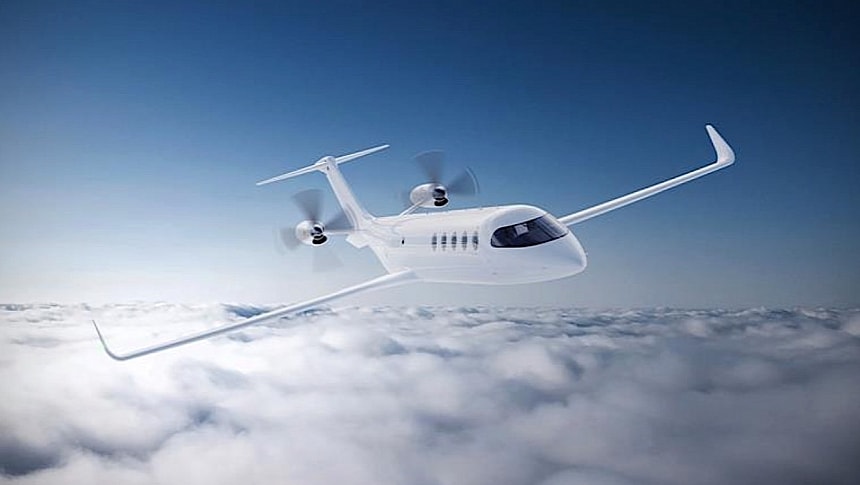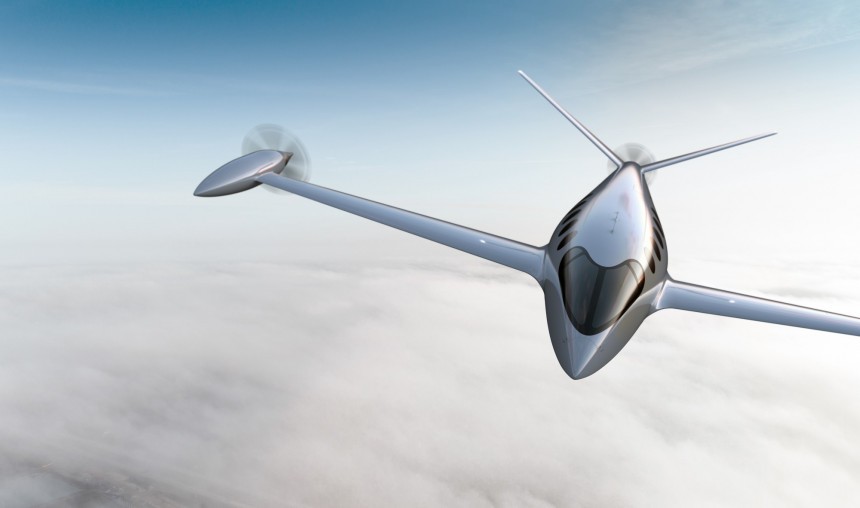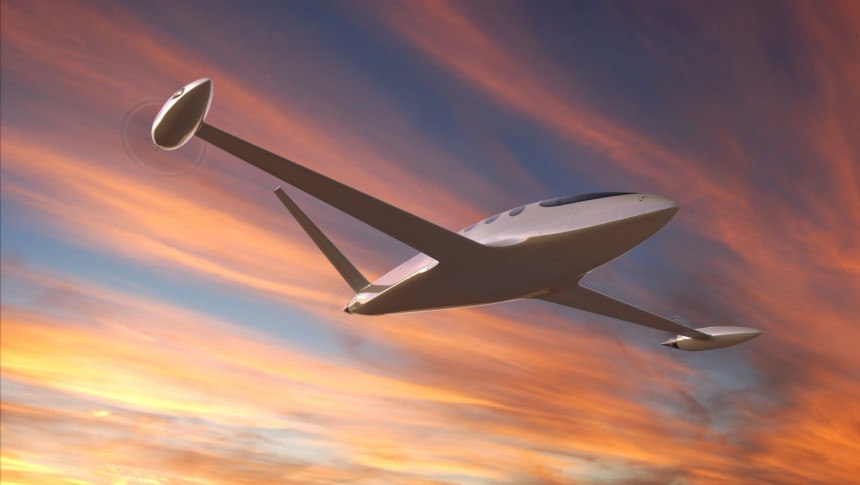No matter the advancements made in the technology that powers them, aircraft generally tend to maintain the same overall shape as their predecessors. So does an electric flying machine called Alice, but this one once had enough novel design lines to make it the sexiest of its kind.
Alice is an electric aircraft being designed by an Israel-born, U.S.-headquartered startup called Eviation. The stated mission of the company is to "build beautiful electric airplanes using advanced technology and impeccable design," and just a quick look at the original design of the Alice will have you convinced these guys were on the right track to meet that goal.
The airplane is not meant to move too many passengers or cargo. When it comes to people, there is only room for nine of them, aside from the ones in the cockpit. In cargo configuration, it was designed to have a maximum takeoff mass of 18,400 pounds (over 8,300 kg).
The plane is supposed to be powered by a pair of electrical power units produced by a company called magniX. You may know the name as it recently teamed up with NASA for the Electric Powertrain Flight Demonstration (EPFD) program being conducted at the Glenn Research Center.
The powertrain Alice uses is called magni650 and each unit is capable of delivering up to 934 horsepower. With two of them installed, the aircraft should be capable of reaching top speeds of 299 mph (481 kph). The battery pack installed on board should keep it going for as much as 290 miles (467 km), meaning the thing has been specifically designed for short trips between nearby locations.
All of the above may be pretty impressive for a plane in this class, but it certainly was the aircraft's design that captured the attention the most.
Made with 95 percent composite materials, Alice was introduced into this world looking like a regular plane from afar. But that was a perspective that changed as soon as you came closer to it. It was then that people noticed the shape of the cabin unlike anything else in the industry: slightly bulky on the front and thinning significantly towards the rear.
The thing looked more or less like a teardrop traveling horizontally through the air, or as some sort of missile capable of carrying humans - and that made it unmistakable. Sadly, it's a design that is now reserved for the history books.
The Eviation Alice was first presented as a static model in Paris in 2019, and since then, it seems, every time Eviation had something new to tell us about the project some sort of major design change also took place.
It most recently happened when the aircraft conducted its initial flight test in 2022, and it did that again this week, when the company announced the completion of the conceptual design review.
Conducted with help from U.S.-based TLG Aerospace, the procedure is an important step to take when trying to clear an aircraft for production and certification. The plane, it seems, passed with flying colors, but not in the form that we knew it in.
Although Aviation says the new design approach maintains Alice's signature look, the plane does not look even close to what it used to and is now pretty much indistinguishable from the rest of the pack.
We have a cabin that is about the same width front to end, the two main wings with large winglets on their tips (replacing the upset ones used until now). The rear end is different as well, as it's now higher than before.
What Eviation kept from the old Alice is the location of the plane's propellers. They are not located where you'd expect, on the wings, but on the rear tail, supported by pylons. Maybe that's what Eviation meant when claiming Alice maintains its signature look.
The reasons behind the visual changes, whether we like them or not, do make sense. A constant cross-section of the body ensures a reduction in parts count and lowers production costs. On top of it all, it helps optimize cabin space.
The company performed other changes as well, less visible than the design ones. For instance, a new compartment was added above the wings to integrate a range of energy storage systems solutions. This change should also help with certification.
The Eviation Alice plans to take the new plane to the sky as soon as next year, although it's unclear when we're to expect a market roll-out. Enough carriers seem to be pretty interested in the design, having already placed orders for the plane that total $5 billion. For reference, the expected price of one of these planes is $4 million.
On the list of companies that have already done this are Massachusetts-based Cape Air, Germany's Evia Aero, or Mexico's Aerus.
The airplane is not meant to move too many passengers or cargo. When it comes to people, there is only room for nine of them, aside from the ones in the cockpit. In cargo configuration, it was designed to have a maximum takeoff mass of 18,400 pounds (over 8,300 kg).
The plane is supposed to be powered by a pair of electrical power units produced by a company called magniX. You may know the name as it recently teamed up with NASA for the Electric Powertrain Flight Demonstration (EPFD) program being conducted at the Glenn Research Center.
The powertrain Alice uses is called magni650 and each unit is capable of delivering up to 934 horsepower. With two of them installed, the aircraft should be capable of reaching top speeds of 299 mph (481 kph). The battery pack installed on board should keep it going for as much as 290 miles (467 km), meaning the thing has been specifically designed for short trips between nearby locations.
All of the above may be pretty impressive for a plane in this class, but it certainly was the aircraft's design that captured the attention the most.
The thing looked more or less like a teardrop traveling horizontally through the air, or as some sort of missile capable of carrying humans - and that made it unmistakable. Sadly, it's a design that is now reserved for the history books.
The Eviation Alice was first presented as a static model in Paris in 2019, and since then, it seems, every time Eviation had something new to tell us about the project some sort of major design change also took place.
It most recently happened when the aircraft conducted its initial flight test in 2022, and it did that again this week, when the company announced the completion of the conceptual design review.
Conducted with help from U.S.-based TLG Aerospace, the procedure is an important step to take when trying to clear an aircraft for production and certification. The plane, it seems, passed with flying colors, but not in the form that we knew it in.
Although Aviation says the new design approach maintains Alice's signature look, the plane does not look even close to what it used to and is now pretty much indistinguishable from the rest of the pack.
What Eviation kept from the old Alice is the location of the plane's propellers. They are not located where you'd expect, on the wings, but on the rear tail, supported by pylons. Maybe that's what Eviation meant when claiming Alice maintains its signature look.
The reasons behind the visual changes, whether we like them or not, do make sense. A constant cross-section of the body ensures a reduction in parts count and lowers production costs. On top of it all, it helps optimize cabin space.
The company performed other changes as well, less visible than the design ones. For instance, a new compartment was added above the wings to integrate a range of energy storage systems solutions. This change should also help with certification.
The Eviation Alice plans to take the new plane to the sky as soon as next year, although it's unclear when we're to expect a market roll-out. Enough carriers seem to be pretty interested in the design, having already placed orders for the plane that total $5 billion. For reference, the expected price of one of these planes is $4 million.
On the list of companies that have already done this are Massachusetts-based Cape Air, Germany's Evia Aero, or Mexico's Aerus.
















